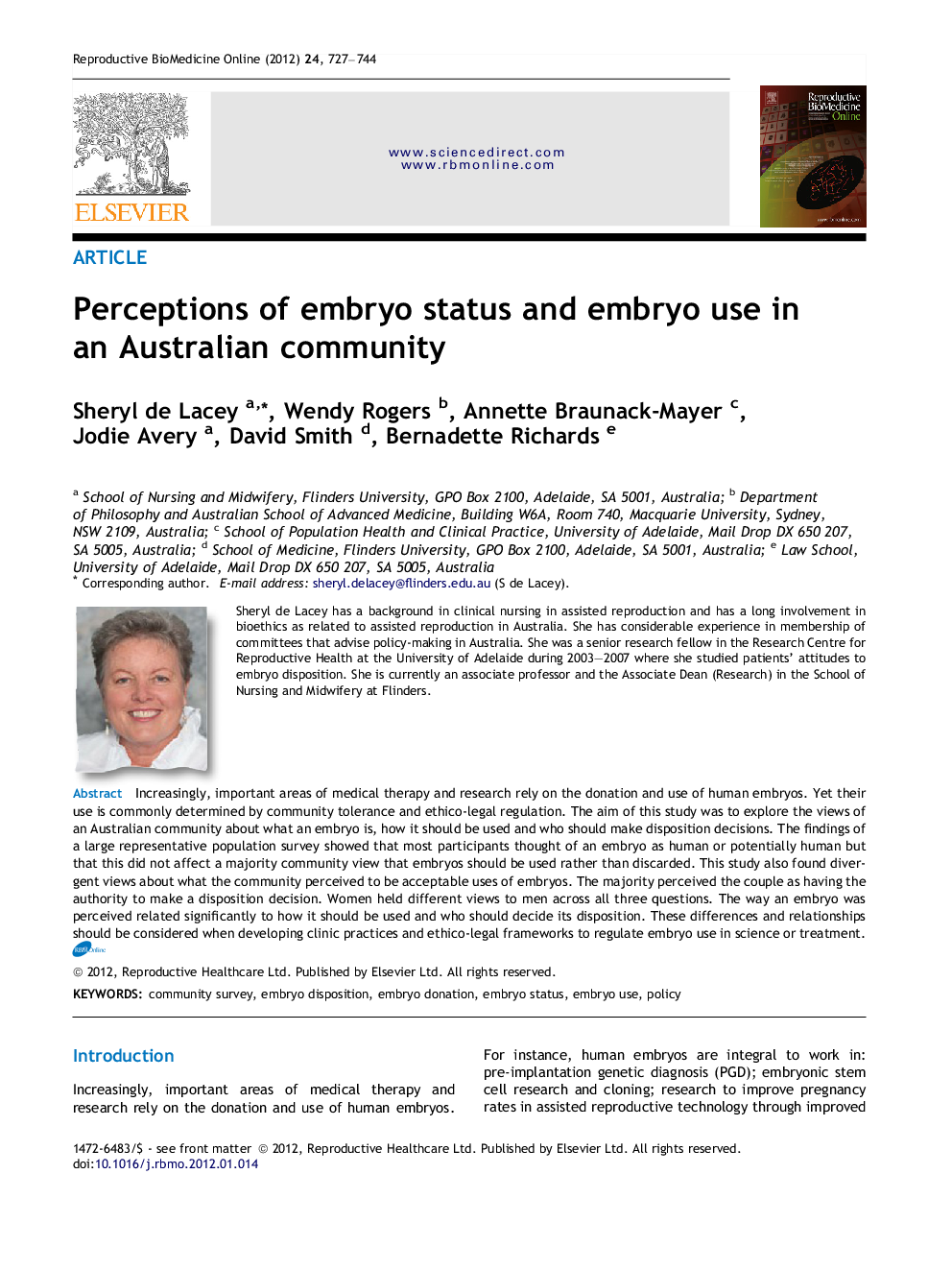| Article ID | Journal | Published Year | Pages | File Type |
|---|---|---|---|---|
| 3970996 | Reproductive BioMedicine Online | 2012 | 18 Pages |
Increasingly, important areas of medical therapy and research rely on the donation and use of human embryos. Yet their use is commonly determined by community tolerance and ethico-legal regulation. The aim of this study was to explore the views of an Australian community about what an embryo is, how it should be used and who should make disposition decisions. The findings of a large representative population survey showed that most participants thought of an embryo as human or potentially human but that this did not affect a majority community view that embryos should be used rather than discarded. This study also found divergent views about what the community perceived to be acceptable uses of embryos. The majority perceived the couple as having the authority to make a disposition decision. Women held different views to men across all three questions. The way an embryo was perceived related significantly to how it should be used and who should decide its disposition. These differences and relationships should be considered when developing clinic practices and ethico-legal frameworks to regulate embryo use in science or treatment.Increasingly, important areas of medical therapy and research rely on the donation and use of human embryos. Yet their use is commonly determined by community tolerance and ethico-legal regulation. The aim of this study was to explore the views of an Australian community about what an embryo is, how it should be used and who should make disposition decisions. The findings of a large representative population survey showed that most participants thought of an embryo as human or potentially human but that this did not affect a majority community view that embryos should be used rather than discarded. We also found divergent views about what the community perceived to be acceptable uses of embryos. The majority perceived the couple as having the authority to make a disposition decision. Women held different views to men across all three questions. The way an embryo was perceived related significantly to how it should be used and who should decide its disposition. These differences and relationships should be considered when developing clinic practices and ethico-legal frameworks to regulate embryo use in science or treatment.
